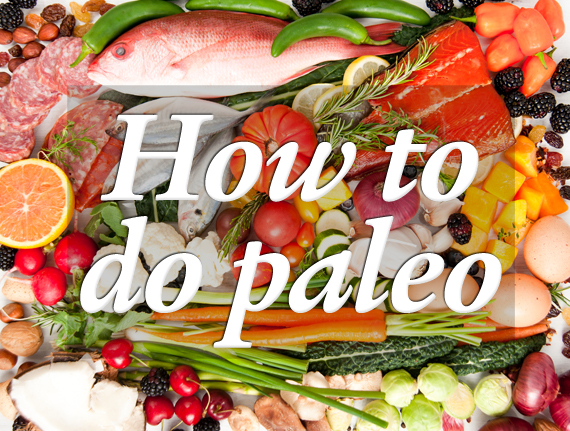
A new year means new resolutions and I bet a lot of people have made themselves many promises along with the likes of ‘this year I will really try to stick to a clean paleo diet’ or ‘maybe this is the year I will try this paleo diet everyone is talking about’. Whether you consider yourself a paleo expert or you’re only briefly acquainted with the aforementioned diet and lifestyle, this is my list of tips on how to embrace paleo so it no longer scares you, intimidates you or stresses you out before you even get into it.
Please take the time to get to the end as some of the most important points are there.
Quick Paleo Recap
1. Paleo is short for Paleolithic and in our context it refers to a diet and in many ways a lifestyle, that draws its core principles or philosophies from our hunter-gatherer ancestors.
It’s not (and this is a very important note to keep in mind) about replicating the caveman way of life, and we don’t actually know exactly what was eaten back then, but it’s about looking at our evolutionary biology (and we only have to go back as far as our grand-grand-parents) – and figuring out what are the healthiest, most nutrient dense foods we can eat to nourish our bodies, prevent diseases and lead a healthier life.
And that, combined with modern science and research has led to the development of this eating framework and a diet we now know as paleo.
2. In the media, it’s often also referred to as a the primal, caveman, stone age, real food or whole food diet but essentially it’s about eating nutrient-dense foods such as meat, fish, seafood, healthy fats, vegetables, fruit, berries, nuts and seeds and avoiding foods that are problematic for our health and can distress our metabolism, interfere with nutrient absorption and promote systemic inflammation.
3. The problematic foods we avoid – and they all have a various degree of negative effects on our health and there is a whole bunch of caveats as usual – include grains, legumes, dairy, processed sugar, industrial processed oils and fats such as margarine and canola or soybean oil, and all processed foods containing the above.
4. Paleo is also greatly concerned with our lifestyle, food is just a small part of it. The paleo lifestyle, although I just call it ‘common sense lifestyle’ advocates stress management, sleep improvement, regular, primal-inspired exercise, lots of sunshine, getting back to nature, having regular tech detox, reconnecting with communities or our tribes – a lot of the things we’re just not getting right in the modern age.
5. One of the things to note is that the paleo diet has gained huge popularity and following in the last few years and as a result it is often scrutinized, misrepresented and often misunderstood. People think it’s very low-carb or it’s heavily focused on meat and that we all do CrossFit and things like that. But in reality, it’s simply about making better choices to not consume processed food, or foods high in anti-nutrients, and focus on real, whole food that came from the ground, trees, ocean, the paddock and so on.
And unlike some of the other diets, which might focus on weight loss alone, paleo is more concerned with long-term health. It’s not as simple as just eliminating certain foods.
Some of the goals of the paleo eating include healing of the gut and improving the gut flora in general, which have more effects on our health than people realise. It’s about getting our omega fatty acids back in balance and thus reducing systemic inflammation (typically we consume more omega-6s than omega-3s) and it’s more about improving digestion and metabolism so that you achieve your optimal weight, which for some people means weight gain, and for some it means getting stronger.
It’s also about managing allergies and food intolerances or managing auto-immune conditions. For me, it’s more about energy, mental clarity and longevity.
Finally, it’s important to reiterate that there is no one-size-fits-all paleo diet; it’s more of a framework, which can be tailored to individual needs, goals, body types, sensitivities, lifestyle and budget. It’s about nurturing your body and mind the best you can and, most importantly, it’s not just about the food.
How To Make The Most Out Of Paleo Diet & Make It Easy?

Have Protein With Every Meal
Proteins, found in animal and fish based products as well as legumes and certain seeds, are the building blocks of the body helping us to build muscles and keep our immune system in tip-top condition. Having protein with every meal, especially breakfast, helps to stabilise insulin production and ensures a long-lasting, slow release of energy keeping your full for longer.
Embrace Fat
Are low-fat margarine and fat-free salad dressing regular on your shopping list? It might be time to re-evaluate your knowledge of dietary fats. The mainstream claims that saturated fat and cholesterol are evil don’t paint the full picture and have been misleading our society for many decades. The fact is that our body needs fat for many of its functions.
‘A recent meta-analysis of 22 studies related to saturated fats and the increased risk of cardiovascular disease found ‘that there is no significant evidence for concluding that dietary saturated fat is associated with an increase of CHD (coronary heart disease) or CVD (cardiovascular disease)’, says clinical nutritionist Claire Yates. ‘Eating good healthy fats in your diet will not make you fat. Fats are highly beneficial in the diet and also aid in the absorption of fat-soluble vitamins, such as vitamins A, D, E and K.’
Yates also notes that saturated fats such as coconut oil have antibacterial and antiviral properties and cholesterol, one of the most abundant and important steroids in your body, plays a role in the cell membrane and nerve tissue repair amongst other body functions.
However one must not confuse the good fats with the bad fats. Trans fats found in products using hydrogenated oils such as margarine, baked foods and chips as well as rancid and oxidized poly-unsaturated oils and too much Omega-6 fatty acids found in soybean, canola and vegetable oil can be harmful and cause inflammation, atherosclerosis, high triglyceride levels and are strongly linked with an increased risk of heart disease.
Stop fearing fat and embrace foods like grass-fed butter, coconut oil, avocados, olive oil, oily fish and free range eggs and your body will thank you for it.
Nurture Your Gut Flora
You would be surprised how many symptoms and conditions, such as poor sleep, headaches, poor digestion and even your mood, are associated with the health of your gut flora.
Keeping the gut healthy and in good condition is not just about a daily dose of probiotics such as yoghurt, kimchi or sauerkraut. It’s also about eliminating or avoiding (as much as possible) the sources that cause the imbalance and introduce the damaging bacteria in the first place: antibiotics (they must be taken when necessary and advised by your physician), physical and psychological stress and environmental toxins such as pesticides and chemicals.
A diet high in processed sugars, alcohol and gut-irritating grains and legumes will also contribute to unbalanced gut flora. To assist with the healing of the damaged gut, nutritionist Claire Yates also recommends opting for foods high in Omega-3 fatty acids, vitamin A, zinc, curcumin (turmeric), quercetin (capers, sorrel, dill, red onion, watercress, kale) and glycine (bone broth). Supplementation with L-glutamine or bitter herbs can also be of benefit, but Claire recommends consulting your primary health care practitioner first.
Learn more about probiotics here and gut health in general here.
Get Your Omega Fatty Acids Balanced
If the concept of essential fatty acids is unfamiliar, here is what you need to know. There are two types of essential fatty acids that our bodies cannot produce but need to stay in good shape: the good, anti-inflammatory omega-3 fatty acids and the not always good, often pro-inflammatory omega-6 fatty acids.
We need both but in a healthy ratio of 1 to 2 omega-6s for every omega-3, which is what our ancestors consumed. In today’s Western society we consume as much as 15 times more omega-6 fatty acids than omega-3s. This imbalance leads to a continuous state of systemic inflammation, which is believed to be one of the causes behind many of the modern diseases, allergies, asthma and other immunity-related conditions.
To improve this ratio you need to consume more omega-3 rich foods (oily fish, leafy greens, flaxseed, omega-3 enriched eggs) and reduce the consumption of foods containing too much omega-6s (processed and seed oils such as soybean, canola, sunflower and corn and packaged foods that contain them, grain fed meat, excess nuts and seeds).
Taking omega-3 fatty acid supplements such as fish or cod liver oil is also beneficial if you’re not consuming enough fish. Algae supplement is advised for those allergic to fish and vegetarians.
Swap Beer For Red Wine
Unless you’re suffering from gut issues or trying to improve the health of your gut flora, an occasional drink can help to relax and compliments the dining experience. Stay away from beer or other drinks containing gluten or excess sugar. Red wine is your best option as it’s lower in sugar and contains heart-friendly antioxidant resveratrol. On a hot day go for dry white wine, reduced sugar cider or vodka, fresh lime and soda.
Make Friends With Your Butcher
One of the things I love about the Paleo approach to eating is that it advocates a healthier, and in many ways a more sustainable, meat consumption. Getting a variety of protein from grass-fed cattle and pasture-raised poultry is healthier and tastier but is not always accessible or affordable. Getting to know your butcher means that you can learn where the meat comes from and you can place specific bulk orders for a variety of meat you can share with friends and family.
Rethink Breakfast
For many people, one of the hurdles when transitioning into Paleo is breakfast. The struggle comes from our preconditioned knowledge of what breakfast should look like and how quickly we should be able to shove it down our mouths. It should, however, be the most important meal of the day setting your energy levels and regulating your hunger for the day ahead.
Your morning meal should include protein, fat and some carbohydrates and it doesn’t have to look, smell or taste like a typical breakfast. Reset your thinking and remember that chicken or salmon and salad for breakfast are just as good as they are for dinner or lunch. Check out my paleo breakfast recipes section for ideas.
Entertain More At Home
Depending on where you live, eating Paleo while out is not as difficult as it may seem however there are certain things you just can’t control: the oils in which the foods are cooked, the seasoning or sauces that are used to flavour the food and the source of the food itself. Sometimes you just have to go with it!
Otherwise, it’s much easier to stick to a healthier way of eating if you can prepare and cook your own meals. Instead of going out to an often overpriced restaurant, I often invite a few friends for dinner or lunch. They bring wine or contribute towards ingredients and I make something tasty and healthy at the same time.
Don’t Be Dogmatic
One of the most important points about the paleo diet is that it’s not actually a diet. It’s a lifestyle and long-term investment in your health that is easily maintainable if you’re not too strict and fanatical about it.
As long as you listen to your body and stay within a healthy framework of the paleo guidelines, having an occasional ice-cream, corn tortillas or French cheese is going to do more good than harm and will ensure the longevity of your new healthy eating habits.
Don’t Get Caught Out
As well as sleeping better, moving around more and stressing less, meal planning and preparation are the other two important habits you will pick up when transitioning into a paleo lifestyle.
It’s important to stock up your fridge and pantry with good, healthy staples and plan some meals ahead to make sure you’re not caught out with no options but the take away French fries or the office vending machine. Prioritise your time to cook more and shop at your local food markets, butcher and fishmonger.
And finally…
Stand Up To Paleo Police
Without doubt, you will encounter people who will question your approach to paleo and at any given opportunity try to give you their ‘expert’ advice on what you should and shouldn’t eat, buy, cook and so on. We all think we know better – that’s just human nature – but the reality is that nobody lives in the same conditions or has the same body.
Some of us have severe allergies, some live in locations where they can’t find grass-fed meat and many simply don’t have the energy or discipline to eat clean paleo all the time – and that’s totally okay.
Just for the record, and so I can point anyone commenting on my next Instagram or Facebook photo of French cheese or sushi with a snarky ‘it’s not paleo’ comment to this post, I proudly declare that I eat some cheese and yoghurt as well as white rice and quinoa on occasion.
That’s because I know my body and I know it can handle these foods. Gelato also happens to make me very happy, and yes I drink wine … and sometimes I might even have a glass of beer. My point is that you don’t need to explain yourselves to others all the time. Simply smile back and tell them how delicious it was! At the end of the day, it’s about making the best choices we can and being kind to our bodies. That is the only thing that counts.
That’s it! My new year’s rant to get you back into loving paleo and making it your own. Thanks for sticking around until the end and please share your own tips and secrets on how you embrace paleo in the comments.
Irena xo


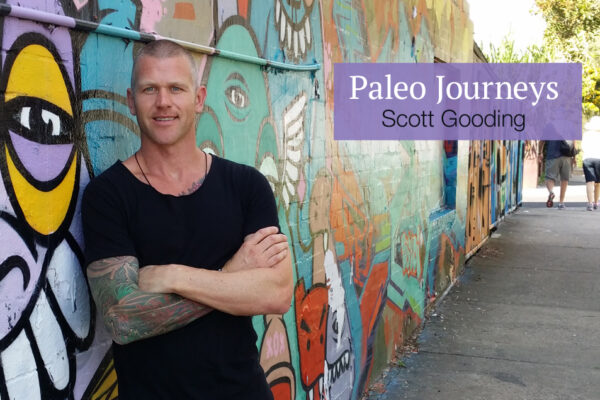
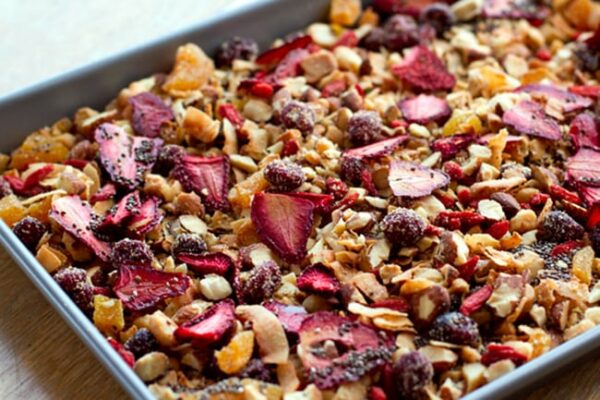
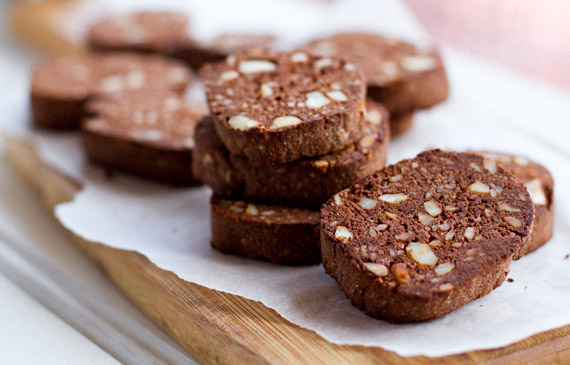
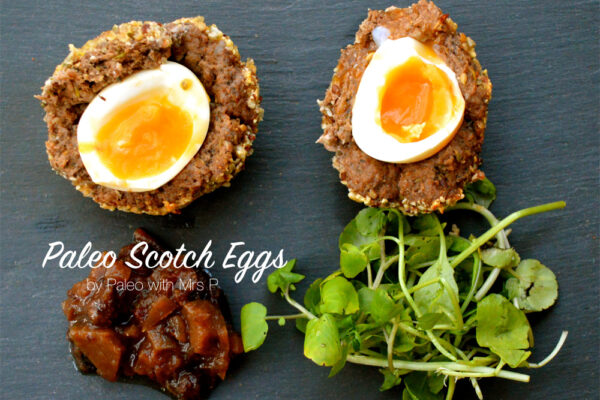
I love your practical approach and how you’ve highlighted the most important parts of Paleo eating. It really isn’t a diet, but a common sense lifestyle that gets easier as you go – especially when you have great recipes for delicious meals. Thanks so much!
Gina Faubert
Health Coach
I bought your cookbook Eat Drink Paleo at About Life in Cammeray. We have loved every recipe that I have tried.I actually went and bought another copy for my daughter who is trying Paleo.I particularly like that the ingredients are not too obscure and that there is plenty of room for substitutions.Also great that it is relevant to Australian palates and budgets.Thanks,Irena
This whole post is perfect Irena. Thank you for taking such a down to earth, yet educated and informative, approach to the paleo lifestyle. There is too much judgement and misconceptions surrounding paleo. As I tell people who question my diet choices, it is about working out what works for you.
THANK YOU for such an honest & liberating post! Having spent most of my adult life searching for (or running from!) different nutrition plans, diets and lifestyles, the paleo way is by far the best one for me! However, I was already falling into the trap of ‘not being strict enough’ and feeling like a failure – here we go again. This lovely post just flicked a switch inside – I’m already feeling more relaxed and excited to just ‘be allowed’ to get on with it 🙂 Thanks again and keep inspiring xx
Thank you for such kind words.
Irena
Thank you! I totally agree – it’s a lifestyle thing, and a healthy lifestyle. I’ve looked and tried quite a few over the years, but paleo is the only one that allows me to eat the foods I love (ie chocolate! – prepared paleo style of course!) and eliminate the need for processed foods. I think of anything out there, paleo should stress people the least because its so easy – particularly with the wonderful, delicious, heavenly recipes you and many other provide!
The only restraint I have to exercise at this time is eating too much fat (good or not) because I’m trying to get my weight down. But I have no doubt that once I get down, I will have no trouble staying largely paleo thanks to the wonderful blogs of people like you who keep us inspired!
Thanks for your post and this site. I’ve only just started adopting the paleo lifestyle and your website is already my go-to for advise, recipes and food checks! I’ve ordered your book and it can’t arrive fast enough.
I love your flexible and easy to manage approach because I have already had people give me their “expert” opinions about what I should and shouldn’t be putting into my body! I’m feeling great and I’m only 2 weeks in. Thanks and keep up the great work!
My pleasure Kristine. Good luck with your own paleo journey 🙂
love this post! Especially the part about standing up to the Paleo Police and not having to be 100% all the time.
I totally agree with everything you’ve said Irey. Keep creating these wonderful recipes for all of us to enjoy. You are an inspiration to me and a lot of others xxx
Thank you, thank you, thank you! It means a lot.
This was so helpful! I am trying to switch my lifesytle to paleo and it has proven to be difficult at times! This is so encouraging and great to be reminded that it doens’t need to be strict all the time!
Additionally, this was full of really great info/facts that make me feel even better about my choice to make the long term switch! Thanks so much so sharing!
You’re welcome! I’m glad you found it useful.
This is an awesome post, thank you! I have been doing the paleo diet on and off for a couple of months. Yes I do CrossFit, but being a student I think it is also important and vital to eat healthy and also to learn about what we are putting in our bodies at all times. I am so glad I came upon your site. Will definitely try out a few of your recipes very soon!
I love the idea of alternative breakfasts options, as I’ve never really understood eating ‘breakfast’ food.
I just want to do paleo I need a proper instruction of vegetarian meal plan for 1 month
Your so firkin awesome… That is all…. So glad I found your website.
Thanks so much! I am glad you did too.
Hi I am looking into this way of living as I have done Atkins yes I did loose weight but it’s very hard long term this wound much more forgiving, I mean no ones perfect. Thank you